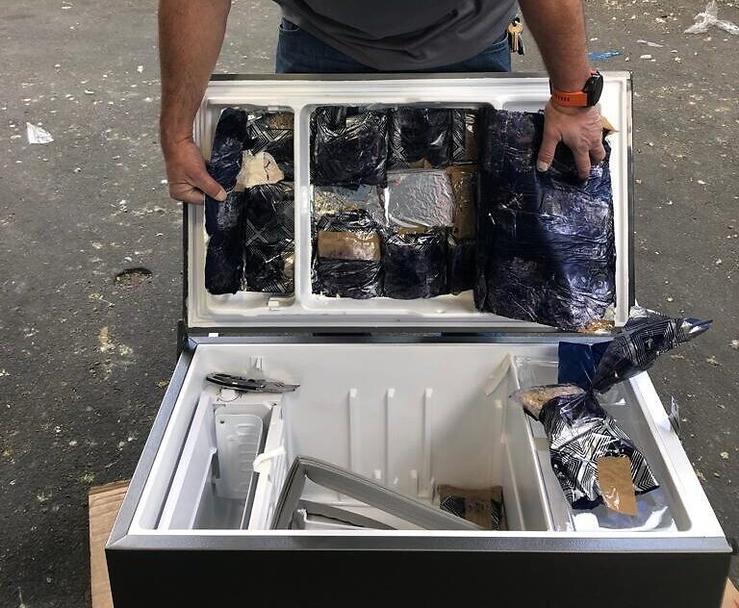The Scoop
Some of the Hamas militants who attacked southern Israel on October 7 were fueled by a synthetic amphetamine called Captagon, which U.S. and Israeli officials believe was used to suppress fear and anxiety during the rampage and stimulate their willingness to attack, kill and, in some cases, torture, civilians.
The officials confirmed Israeli television reports that Israel Defense Forces soldiers found Captagon pills — which are mass-produced and trafficked throughout the Middle East and Europe by the Assad regime in Syria and the Lebanese militia Hezbollah, both close allies of Iran — on the bodies of dead and captured Hamas militants.
U.S. officials said members of the Islamic State group, or ISIS, have also distributed Captagon to its fighters to lower their inhibitions during attacks and terrorist operations. Israeli Prime Minister Benjamin Netanyahu and U.S. President Joe Biden have both compared Hamas’ October attack to the Islamic State group’s signature atrocities, citing the Palestinian militia’s targeting of civilians and willingness to use torture.
Israeli and U.S. officials have pointed to recent seizures of Captagon pills going into the Gaza Strip, Hamas’ stronghold, as highlighting some of the supply chains. Last January, Israel’s Defense Ministry said its security guards captured thousands of pills going into Gaza from the West Bank. The Defense Ministry referred to Captagon then as the “Islamic State drug.” In February, Hamas authorities said it seized 50,000 Captagon pills going into Gaza, but blamed Israel for trafficking the narcotic.
Israel’s government has been reluctant to highlight Hamas’ use of Captagon due to fears it could diminish calls for the Palestinian organization to be held accountable for its crimes, and Israeli and U.S. officials had — until now — declined to confirm the early report on Israel’s Channel 12 on Hamas’ use of Captagon. Israeli officials have circulated videos and battle plans associated with Hamas’ attack to underscore their premeditated nature. “It’s the ideology” that should be focused on with Hamas, rather than the use of Captagon, an Israeli official told Semafor.
In this article:
Jay’s view
The use of Captagon by Hamas is in line with the behavior of other militias engaged in global conflicts, both recently and in past decades. Soviet forces in the 1980s faced mujahideen fighters in Afghanistan who were high on hashish, according to Russian and American accounts. U.S. military commanders in Iraq described insurgents from al-Qaida who were drugged before military operations. And victims of Islamic State attacks in Syria and Iraq, including the Yazidi ethnic minority, recounted how the terrorists used drugs to induce frenzied states in which they’d rape, torture, and mutilate civilians.
“Drug consumption helps these groups enhance their fearsome reputations as they commit atrocities to support their ideology, instill fear among people and draw others to their cause,” wrote Professor Paul Rexton Kan of the U.S. Army War College in describing the Islamic State group’s use of Captagon and other drugs to advance their military strategies and objectives.
Drug use isn’t confined to militias: U.S. soldiers, particularly during the Vietnam War, widely used drugs in order to cope with traumas of battle. This included, marijuana, heroin, and opium.
And this isn’t the first time I’ve come across drugs in relation to militia violence. In 1999, the Indonesian military unleashed militias on the East Timorese population after they voted, through a U.N.-backed tribunal, to secede from Jakarta. Some of the militiamen I came across in the tiny Catholic enclave appeared to be on stimulants or amphetamines in a killing spree that left around 1,000 East Timorese dead. My colleague at the time, Financial Times journalist Sander Thoenes, was shot and killed while approaching one of these militias not long after the East Timorese voted for independence.
Videos compiled by the Israeli government of the Hamas attack — cobbled together from cell phones, GoPros, and car and surveillance cameras — definitely leave the impression that at least some of the militants were juiced up on drugs. In a presentation I viewed on Monday, Hamas members rally themselves into a frenzy after killing Israeli civilians at a southern kibbutz, looking at times like teenagers revving up in a tunnel before a big football game. Their shouts of “Allahu akbar” show how they attach religion to their cause. But the length and ferocity of the assault on Oct. 7 also suggests that at least some of the militants were chemically enhanced.
Syria’s Assad regime and Hezbollah — key allies and proxies of Iran — appear committed to using the narcotics trade to advance their strategic interests. U.S. and European officials believe Syria is now by far the world’s largest producer of Captagon, which has swamped the Middle East and Europe over the past five years. Part of Damascus’s strategy is purely financial: The Syrian regime is desperate for cash after more than a decade of expansive U.S. and European sanctions. But Arab officials have told me they also believe Assad has used Captagon as a strategic tool by trying to weaken the social fabric of Saudi Arabia and the United Arab Emirates — until recently, among Damascus’s fiercest regional rivals.
Room for Disagreement
Syria and Hezbollah have both denied any role in the production or trafficking of Captagon. Hamas officials have also denied importing the drug into the Gaza Strip or distributing it among its fighters.
In recent months, senior Hamas officials have blamed Israel for trying to flood the Gaza Strip with the amphetamine in order to weaken the strength of their movement and society. They noted that Israel employs advanced screening technologies to prevent the smuggling of dual-use or military items into Gaza. They said that similar equipment should be used to fight the spread of narcotics.
“90% of the drugs seized inside the Gaza Strip come from Israel through the Kerem Shalom crossing,” Anwar Zo’rob, an official with the Hamas-run Anti-Narcotics Police Department, told The New Arab in February. “Israel insists on flooding our region with drugs to destroy our youths and contribute to spreading the crimes among the population.”
Some analysts also question whether the Hamas militants got Captagon directly from the movement’s leadership, or if they purchased and used the relatively cheap drug on their own.
Notable
- The U.S. Treasury Department sanctioned members of the Syrian government in March, including relatives of President Bashar al-Assad, for producing and trafficking Captagon along with the Lebanese militia Hezbollah.
- Germany’s Der Spiegel magazine argued that the Assad regime wouldn’t survive without the Captagon trade.


